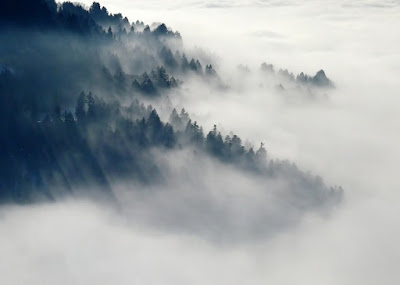After lunch I put on my sunglasses and sauntered off into the sunset. In December night falls about 4.00 pm and sunglasses are unheard of unless as an affectation of cool.
Ben Tallaidh had a coat of white cloud following the mountain contours, up the western slopes, over the summit and down the east, like an inverted old man's beard. There was absolute silence, no crashing waves, no wind,no screaming gulls, The sun tumbled into the Atlantic behind the Treshnish Isles.
On the way back my forty metre shadow looked quite athletic, this cheered me, as I move more like a cart horse than a race horse. But at least I'm still moving, still walking, thinking and enjoying the freedom it brings at no more than two miles an hour.
I got to thinking about walking, two miles an hour is not fast but not slow, it's a pace that suits me, "sauntering" as recommended by David Thoreau in his essay, "Walking" published in the,
Atlantic Monthly shortly before his death in 1862.
Two miles an hour isn't slow as in the polar opposite of fast, it's a good slowness as opposed to haste, it's a pace that can be comfortably kept up all day. Twenty years ago my wife and I set out to climb Mt. Kathadin, highest point in the Appalachians. We left the National Park office at 5.00 am and were regularly overtaken by groups on younger walkers hurrying on. Then as the day progressed we passed the red faced, perspiring overtakers. We arrived on the summit at noon together with an elderly man and a child. Grandfather was wearing a USMC cap, he knew the art of walking.
The last big walk I did was 15 days along the GR 20 in Corsica 12 years ago and I got to thinking about doing something similar in 2018 but more slowly at a lower level but definitely in the sun and on my own, non of my contemporaries seem to be up for it.
 |
| GR 20 Traverse of the Corsican Mountains |
.




















































